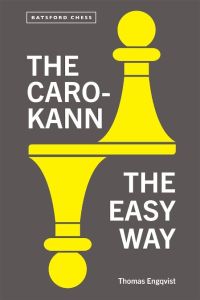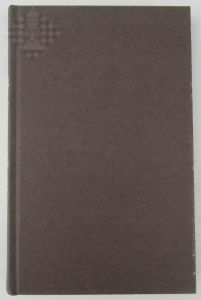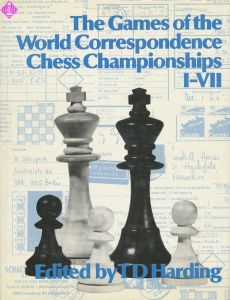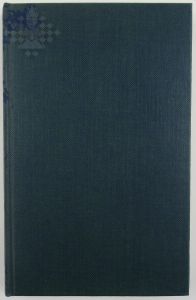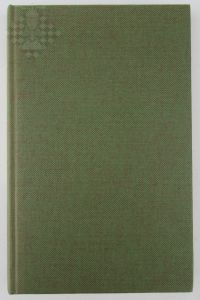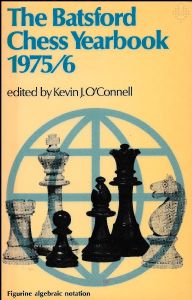Article Number
LEBELWET
Winning Endgame Technique
192 pages, paperback, Batsford Chess, 2. edition 1996
Discontinued
A top player and a leading theoretician team up to provide invaluable practical guidance to help players of all standards cope better with many types of endgames.
Two leading grandmasters, both Championship trainers, study a variety of typical endgame situations which you are likely to encounter. The strategic guidance they provide will be invaluable to players of all standards when playing endgames, or deciding what type of endgame to aim for.
· When is a bishop better than a knight?
· When are a rook and pawn a match for two minor pieces?
· How to win an exchange up
· Tactics in the endgame
· Packed with tips from Garry Kasparov`s trainer
· Features Capablanca`s Puzzle and the Riddle of Duchamp
The authors have put in years of painstaking study to acquire their great mastery of the endgame. Reading this book will help you make the most of your chances in any endgame you reach.
Two leading grandmasters, both Championship trainers, study a variety of typical endgame situations which you are likely to encounter. The strategic guidance they provide will be invaluable to players of all standards when playing endgames, or deciding what type of endgame to aim for.
· When is a bishop better than a knight?
· When are a rook and pawn a match for two minor pieces?
· How to win an exchange up
· Tactics in the endgame
· Packed with tips from Garry Kasparov`s trainer
· Features Capablanca`s Puzzle and the Riddle of Duchamp
The authors have put in years of painstaking study to acquire their great mastery of the endgame. Reading this book will help you make the most of your chances in any endgame you reach.
A top player and a leading theoretician team up to provide invaluable practical guidance to help players of all standards cope better with many types of endgames.
Two leading grandmasters, both Championship trainers, study a variety of typical endgame situations which you are likely to encounter. The strategic guidance they provide will be invaluable to players of all standards when playing endgames, or deciding what type of endgame to aim for.
· When is a bishop better than a knight?
· When are a rook and pawn a match for two minor pieces?
· How to win an exchange up
· Tactics in the endgame
· Packed with tips from Garry Kasparov`s trainer
· Features Capablanca`s Puzzle and the Riddle of Duchamp
The authors have put in years of painstaking study to acquire their great mastery of the endgame. Reading this book will help you make the most of your chances in any endgame you reach.
Two leading grandmasters, both Championship trainers, study a variety of typical endgame situations which you are likely to encounter. The strategic guidance they provide will be invaluable to players of all standards when playing endgames, or deciding what type of endgame to aim for.
· When is a bishop better than a knight?
· When are a rook and pawn a match for two minor pieces?
· How to win an exchange up
· Tactics in the endgame
· Packed with tips from Garry Kasparov`s trainer
· Features Capablanca`s Puzzle and the Riddle of Duchamp
The authors have put in years of painstaking study to acquire their great mastery of the endgame. Reading this book will help you make the most of your chances in any endgame you reach.
| EAN | 0713475129 |
|---|---|
| Weight | 250 g |
| Manufacturer | Batsford Chess |
| Medium | Book |
| Year of Publication | 1996 |
| Author | Alexander BeliavskyAdrian Mikhalchishin |
| Language | English |
| Edition | 2 |
| ISBN-10 | 0713475129 |
| Pages | 192 |
| Binding | paperback |
| Diagrams | 310 |
| Name | Batsford (Anova) |
|---|---|
| Adresse | 151 Freston Road London W10 6TH Großbritannien |
| Internet | www.anovabooks.com |
| rbatley@anovabooks.com |
Verantwortlicher Importeuer:
| Name | Schachversand Niggemann |
|---|---|
| Adresse | Schadowstraße 5 48163 Münster Deutschland |
| info@schachversand.de | |
| Internet | www.schachversand.de |
005 Symbols
007 Introduction
009 1. Pawn Endgames
009 Technical problems in pawn endgames
009 -The opposition
013 -Chess 'materialism'
015 -Overlooking typical counterattacks
017 -How to play with and against passed pawns
022 -Premature resigantion
024 -Exercises
028 Exchanging into pawn endgmes
028 -Simple examples
029 -Comple examples
045 -Exercises
048 2. Rook endgame with two extra pawns
055 3. Typical rook endgames with a passed pawn on the wing
055 The rook`s pawn
060 The knight`s pawn
065 The bishop`s pawn
072 The central pawn
080 4. Various rook endgames
080 The riddle of Duchamp
083 Botvinnik`s puzzle
084 Capablanca`s puzzle
085 Is the endgame J. Polgar-Spassky lost?
094 A cunning king manoeuvre
095 Prophylactic cutting off (cramping) moves
096 What is the best position for the rook?
098 The 'shoulder budge'
099 Exercises
102 5. Bishop Endgames
102 Same-coloured bishops with an isolated pawn
112 Same-coloured bishops with a passed pawn
115 Same-coloured bishops with pawns on one wing
122 6. Which is stronger, the bishop or the knight?
137 7. An unusual endgame
140 8. R, N and 4pawns vs R, B and 3pawns on the same wing
140 N and 4pawnns vs B and 3pawns on the same wing
146 With rooks
158 9. Rook against bishop; how to win an exchange up
182 10. Tactics in the endgame
185 Solutions to the Exercises
191 Index of Games and Composers
007 Introduction
009 1. Pawn Endgames
009 Technical problems in pawn endgames
009 -The opposition
013 -Chess 'materialism'
015 -Overlooking typical counterattacks
017 -How to play with and against passed pawns
022 -Premature resigantion
024 -Exercises
028 Exchanging into pawn endgmes
028 -Simple examples
029 -Comple examples
045 -Exercises
048 2. Rook endgame with two extra pawns
055 3. Typical rook endgames with a passed pawn on the wing
055 The rook`s pawn
060 The knight`s pawn
065 The bishop`s pawn
072 The central pawn
080 4. Various rook endgames
080 The riddle of Duchamp
083 Botvinnik`s puzzle
084 Capablanca`s puzzle
085 Is the endgame J. Polgar-Spassky lost?
094 A cunning king manoeuvre
095 Prophylactic cutting off (cramping) moves
096 What is the best position for the rook?
098 The 'shoulder budge'
099 Exercises
102 5. Bishop Endgames
102 Same-coloured bishops with an isolated pawn
112 Same-coloured bishops with a passed pawn
115 Same-coloured bishops with pawns on one wing
122 6. Which is stronger, the bishop or the knight?
137 7. An unusual endgame
140 8. R, N and 4pawns vs R, B and 3pawns on the same wing
140 N and 4pawnns vs B and 3pawns on the same wing
146 With rooks
158 9. Rook against bishop; how to win an exchange up
182 10. Tactics in the endgame
185 Solutions to the Exercises
191 Index of Games and Composers
In dem Begriff "Endspieltechnik" wird schon deutlich, daß die beiden Großmeister in ihrem Werk mehr vermitteln wollen als eine Ansammlung von Theoriestellungen mit dem Aufkleber "gewonnen", "verloren" oder "remis". Wer das Endspiel gut behandeln will, muß nicht zuletzt die Methoden beherrschen, wie man in komplizierteren Fällen die bekannten Theoriestellungen anstrebt, und dazu muß er fleißig üben.
Die Kapitel über Bauernendspiele, Turmendspiele oder Läuferendspiele zeigen instruktive Beispiele, die überwiegend der aktuellen Meisterpraxis entnommen sind.
Weitere Abschnitte des Buches sind noch anspruchsvoller. Da geht es um "ungelöste" Positionen wie das Rätsel von Duchamp, um das Endspiel Turm, g+f-Bauer gegen Turm und h-Bauer oder um das Endspiel mit Springer, h- und f-Bauer gegen Läufer.
Ein 18seitiges Kapitel widmet sich dem Endspiel mit Turm, Springer und vier Bauern gegen Turm, Läufer und drei Bauern auf einem Flügel. Die Situation kommt nicht oft vor, und die Autoren können keine sicheren Regeln formulieren, aber schaden wird es sicher niemandem, sich die Analysen einzuverleiben. Es sind eben Fingerübungen, wie bei den Pianisten.
Stefan Bücker
Die Kapitel über Bauernendspiele, Turmendspiele oder Läuferendspiele zeigen instruktive Beispiele, die überwiegend der aktuellen Meisterpraxis entnommen sind.
Weitere Abschnitte des Buches sind noch anspruchsvoller. Da geht es um "ungelöste" Positionen wie das Rätsel von Duchamp, um das Endspiel Turm, g+f-Bauer gegen Turm und h-Bauer oder um das Endspiel mit Springer, h- und f-Bauer gegen Läufer.
Ein 18seitiges Kapitel widmet sich dem Endspiel mit Turm, Springer und vier Bauern gegen Turm, Läufer und drei Bauern auf einem Flügel. Die Situation kommt nicht oft vor, und die Autoren können keine sicheren Regeln formulieren, aber schaden wird es sicher niemandem, sich die Analysen einzuverleiben. Es sind eben Fingerübungen, wie bei den Pianisten.
Stefan Bücker
More from Batsford Chess


